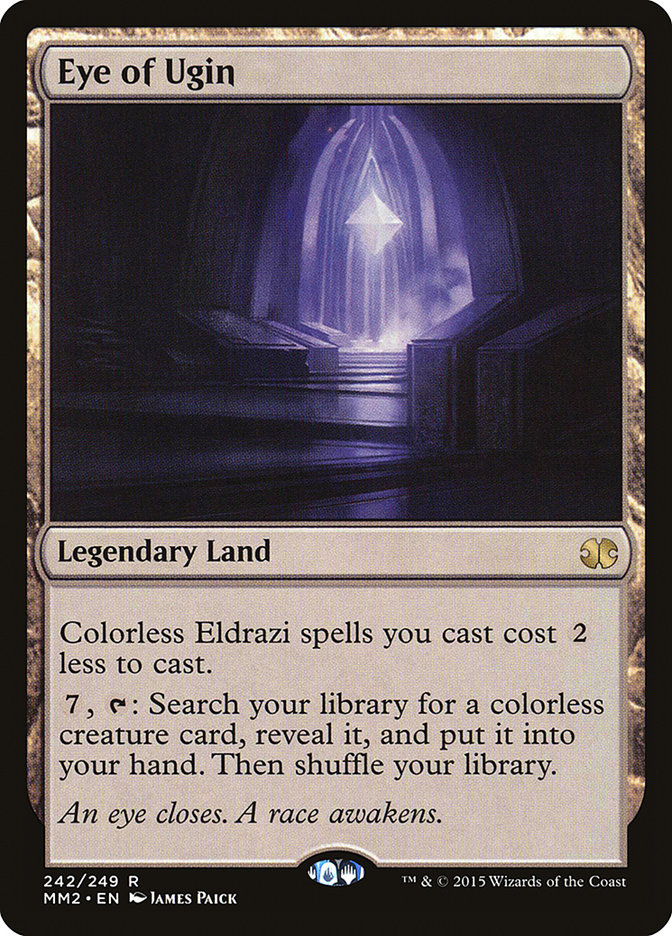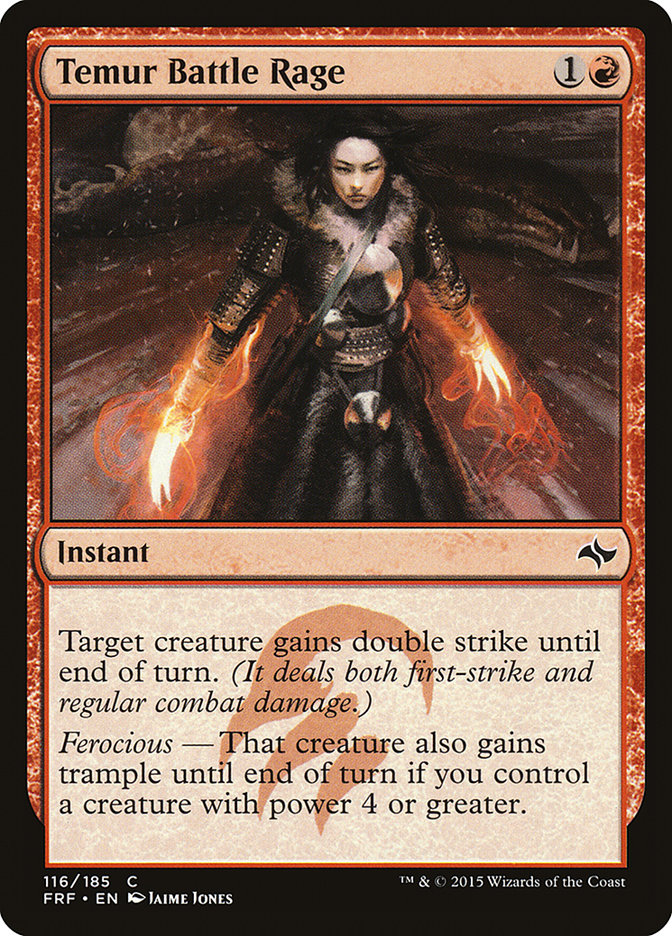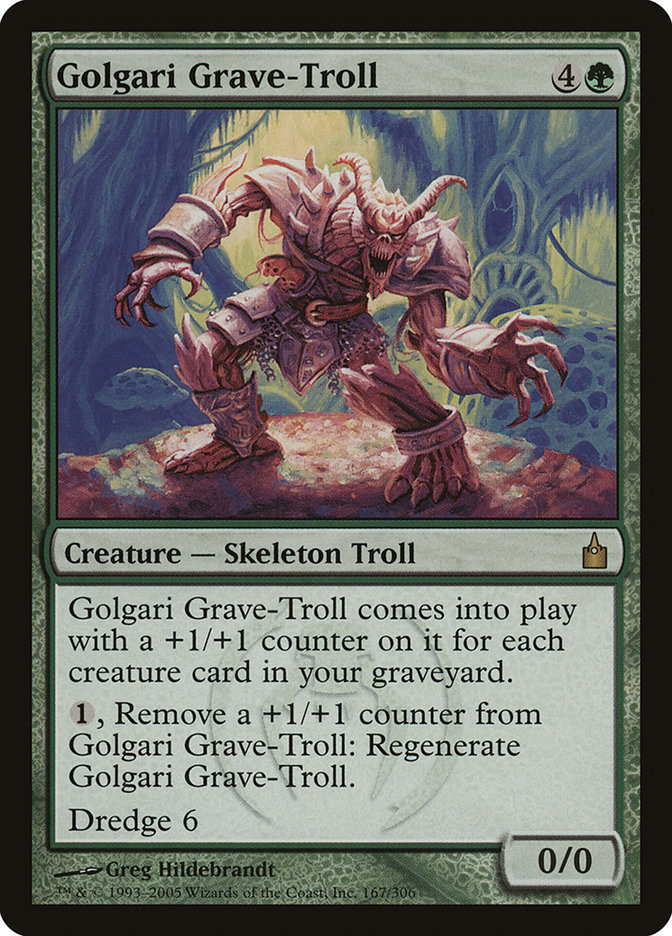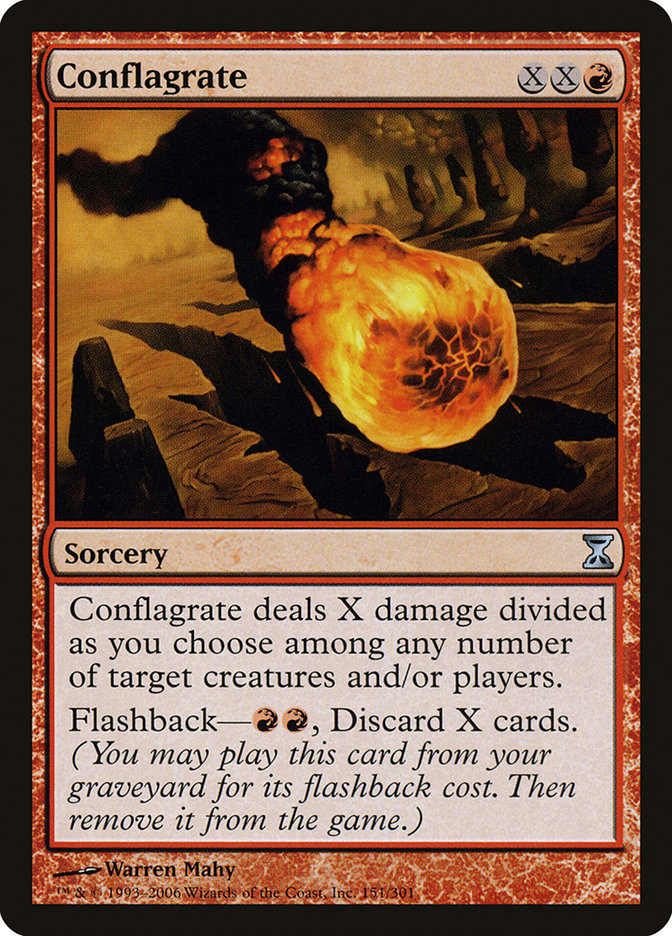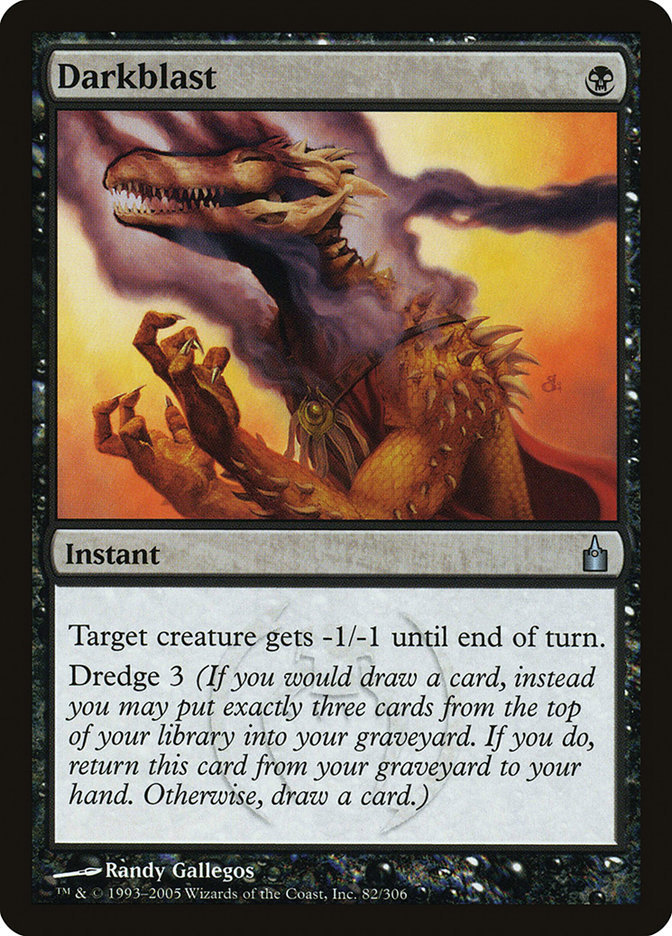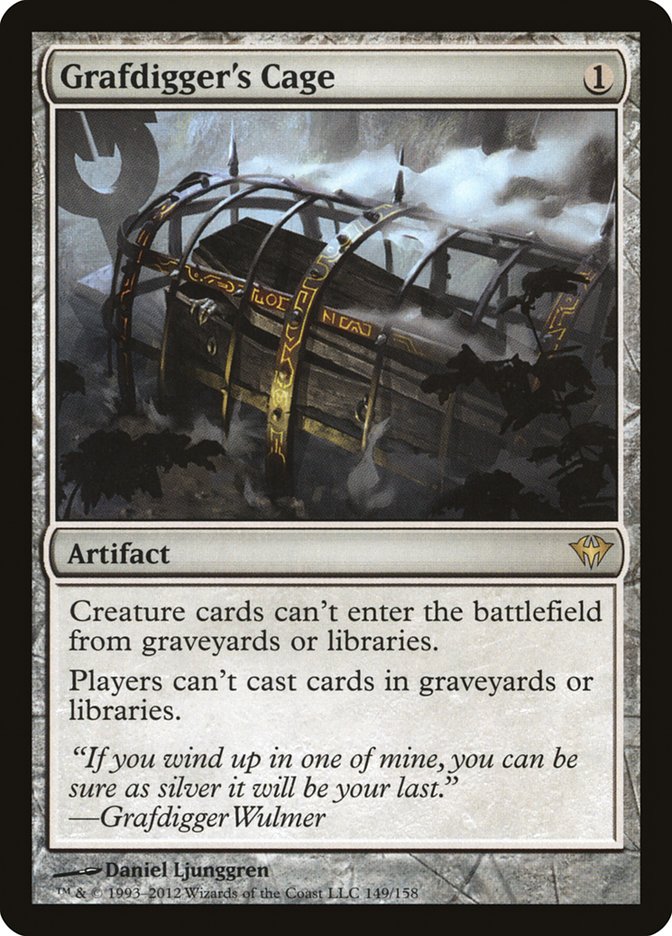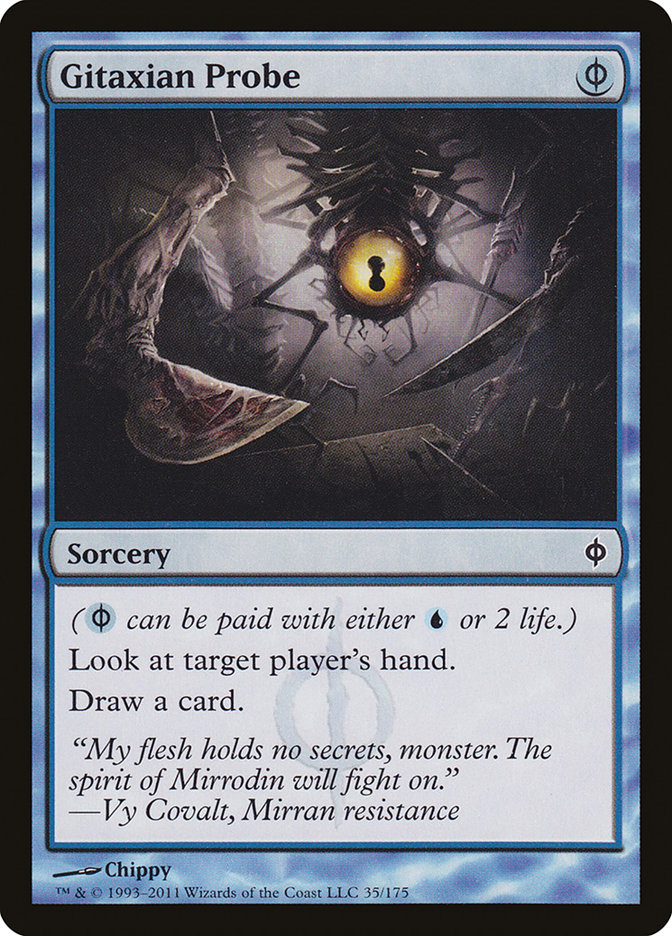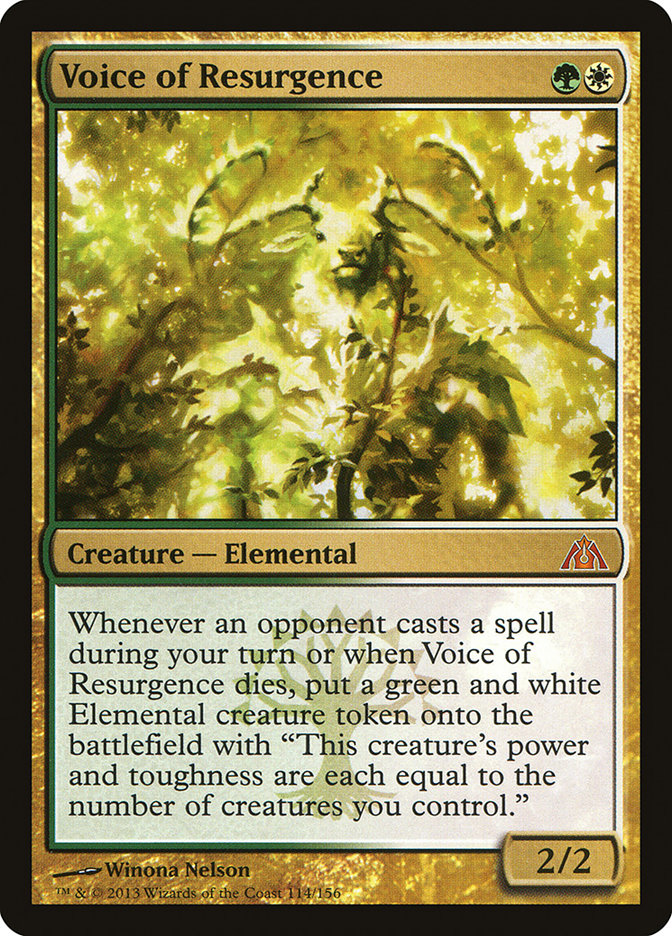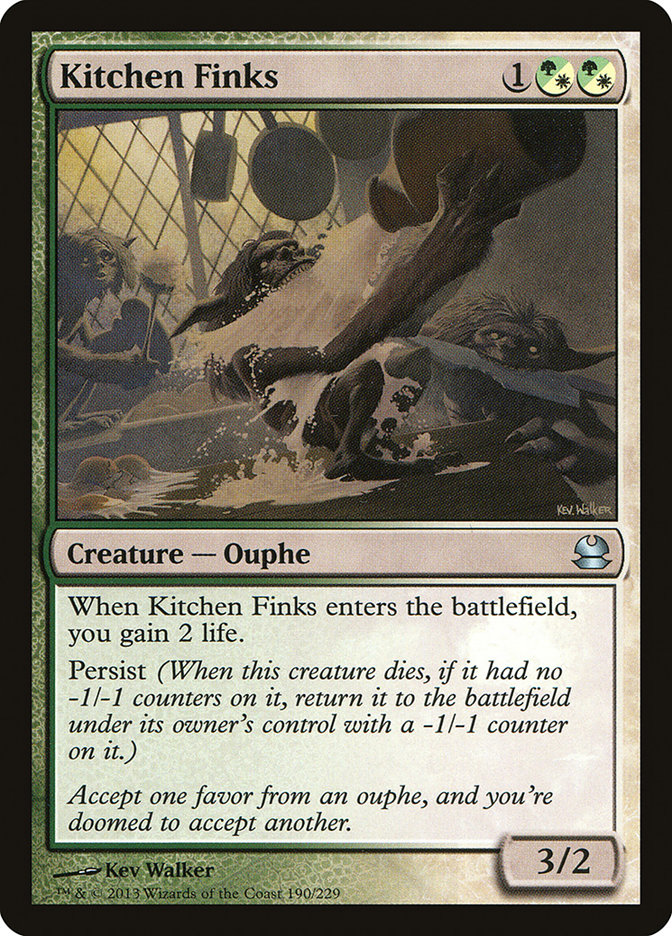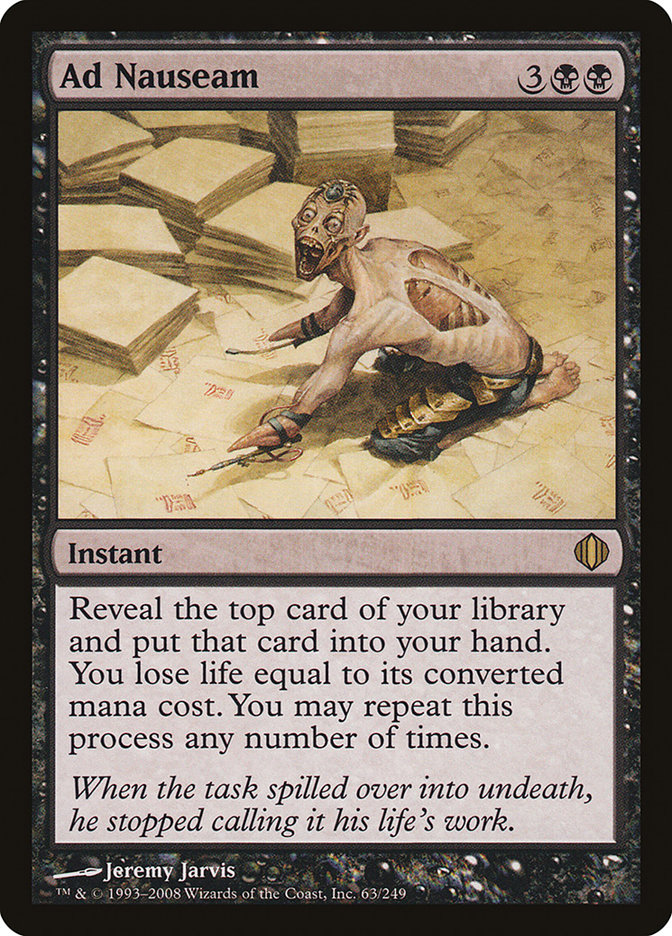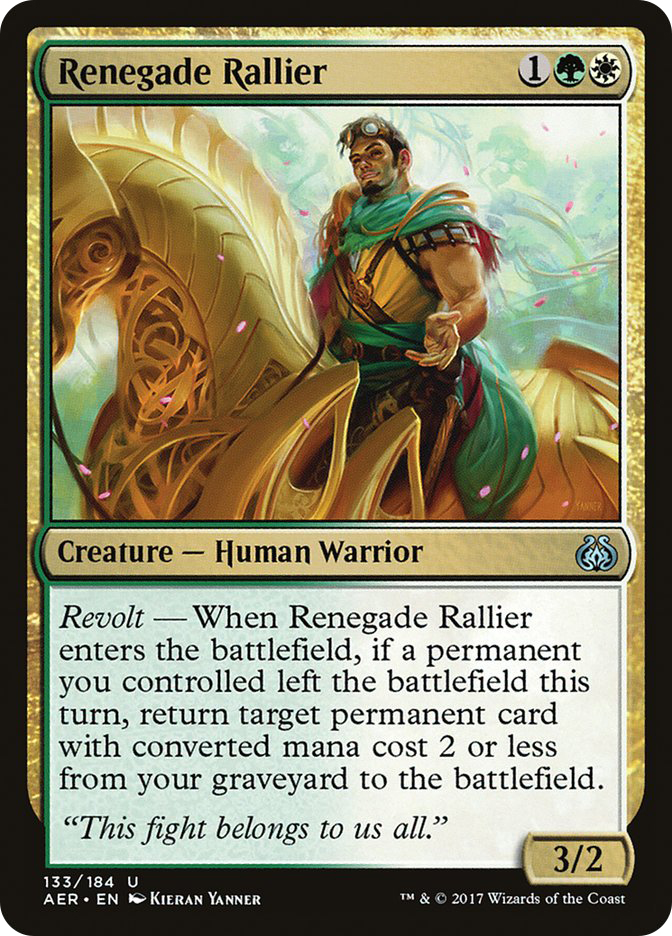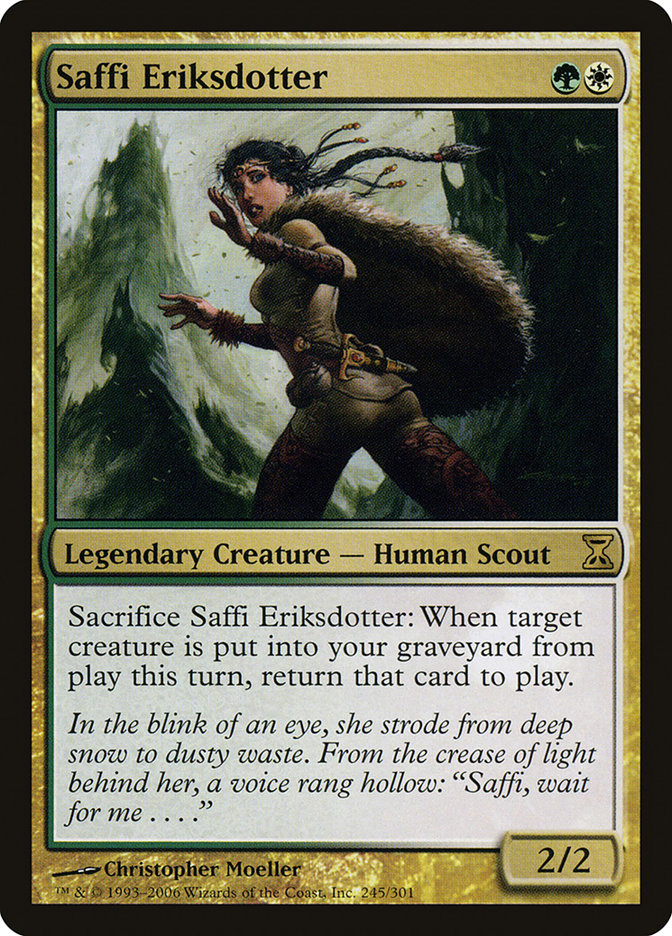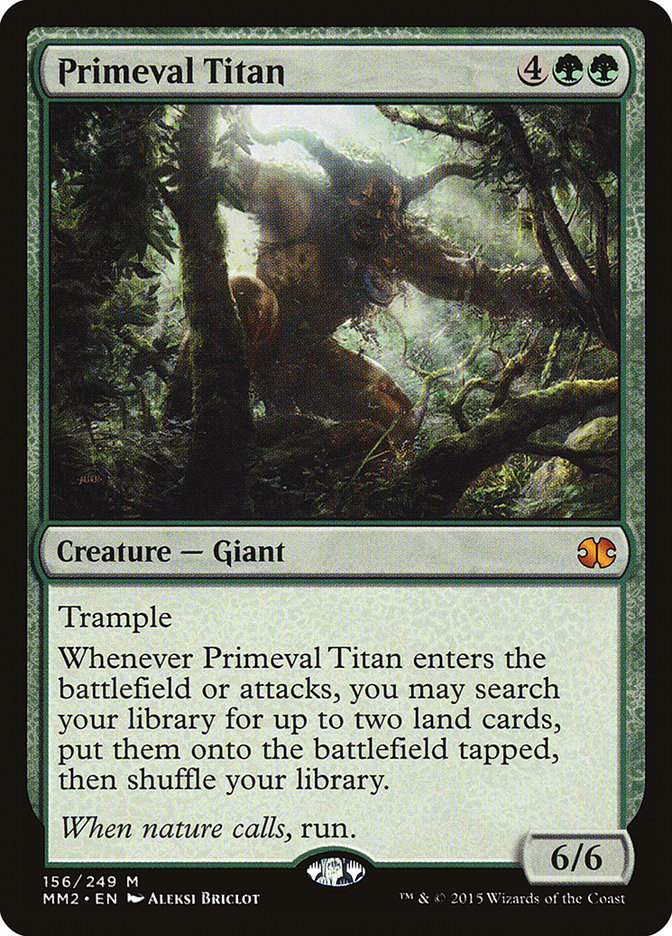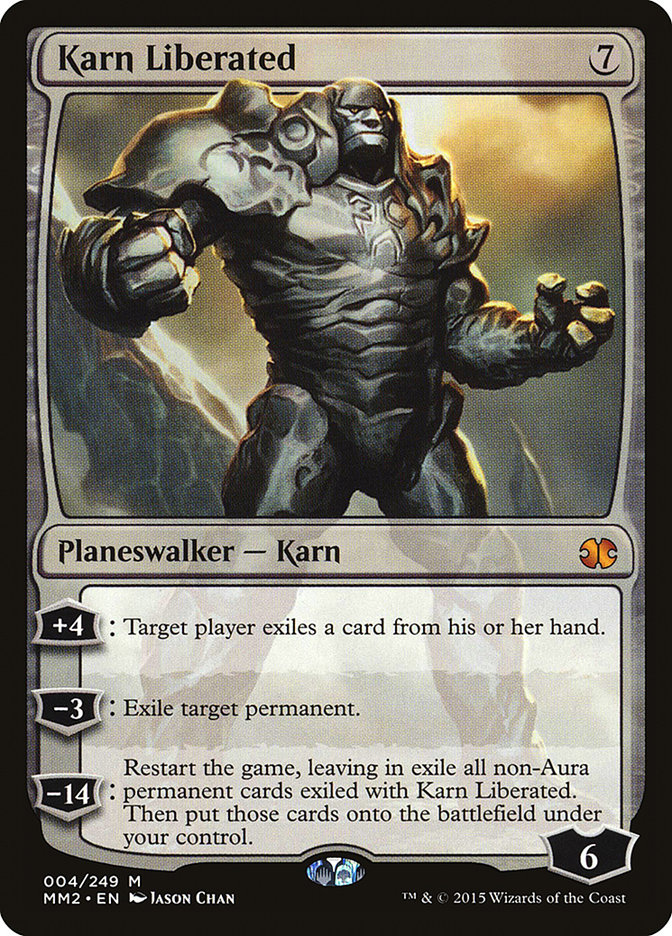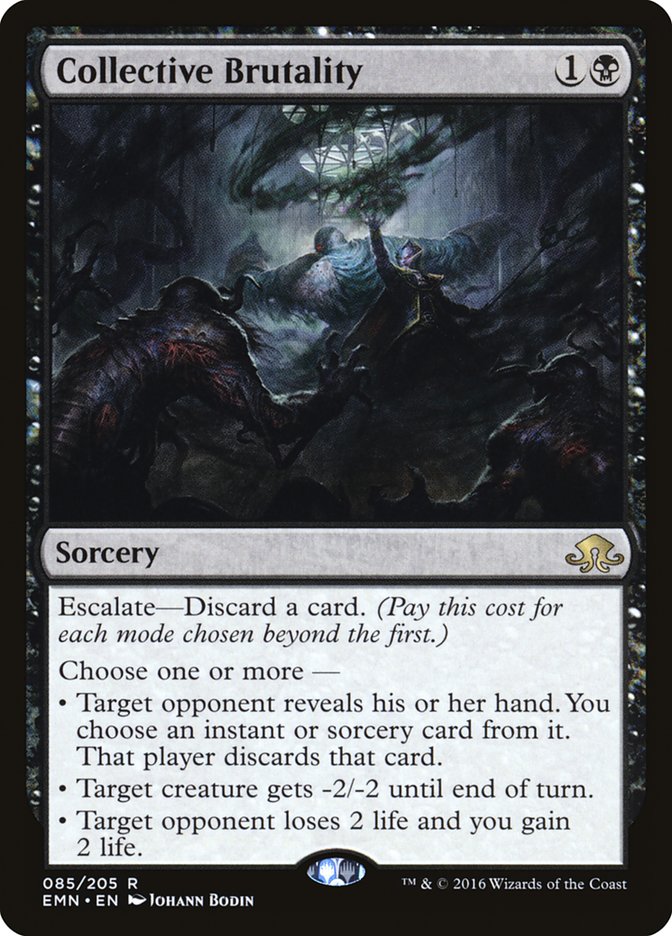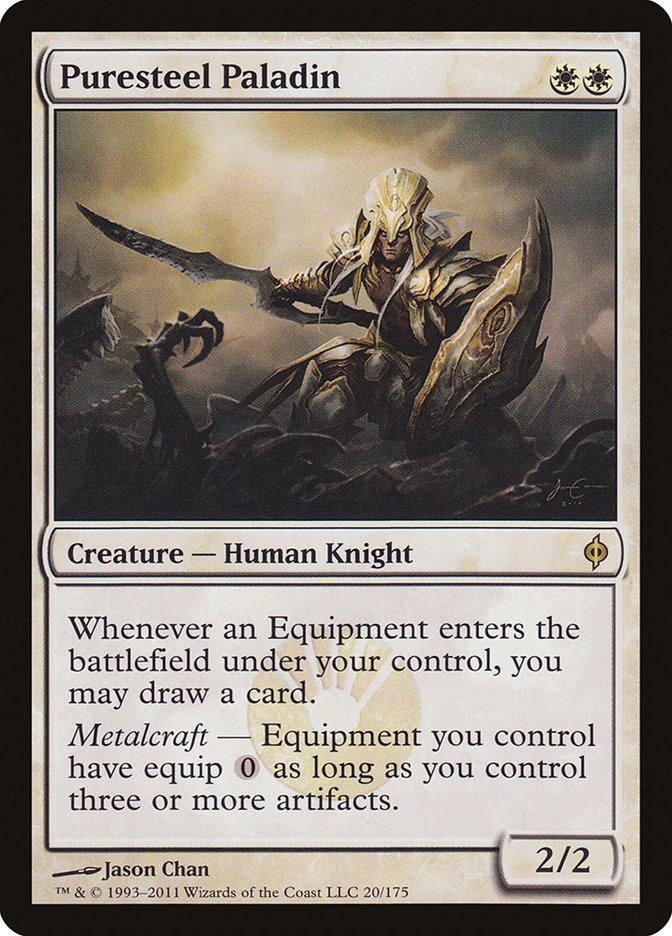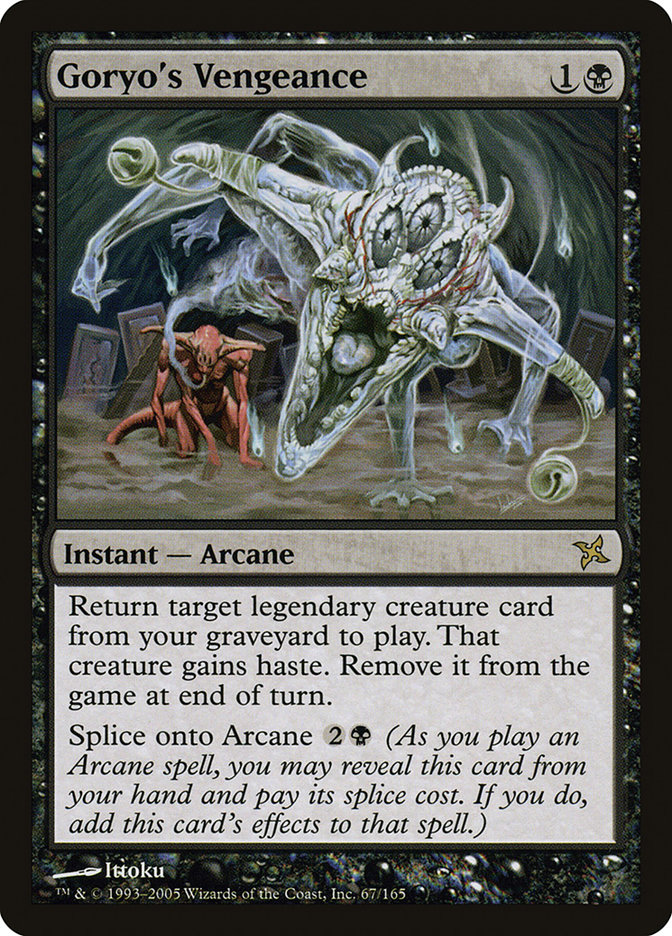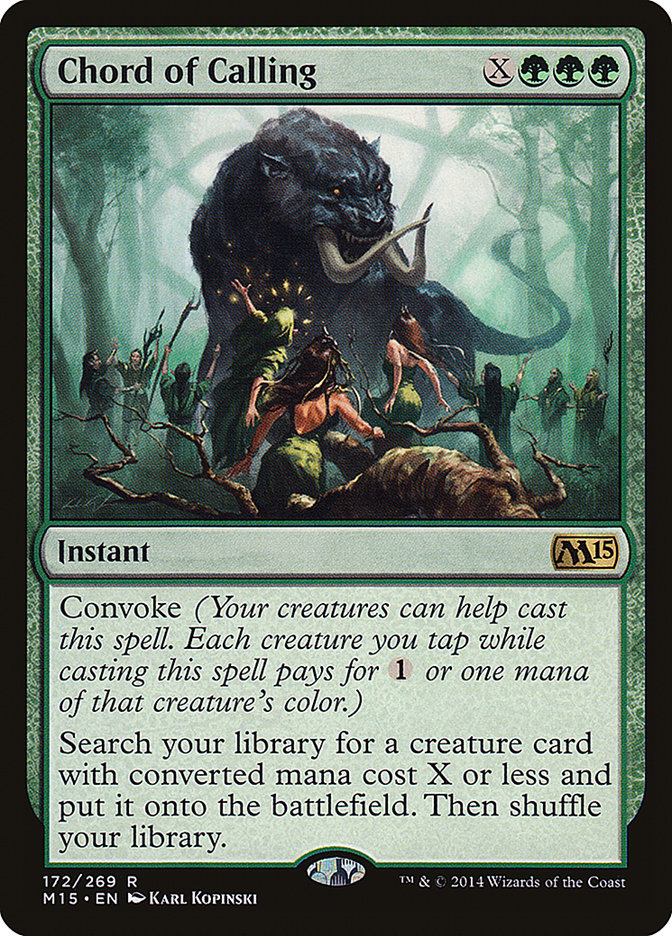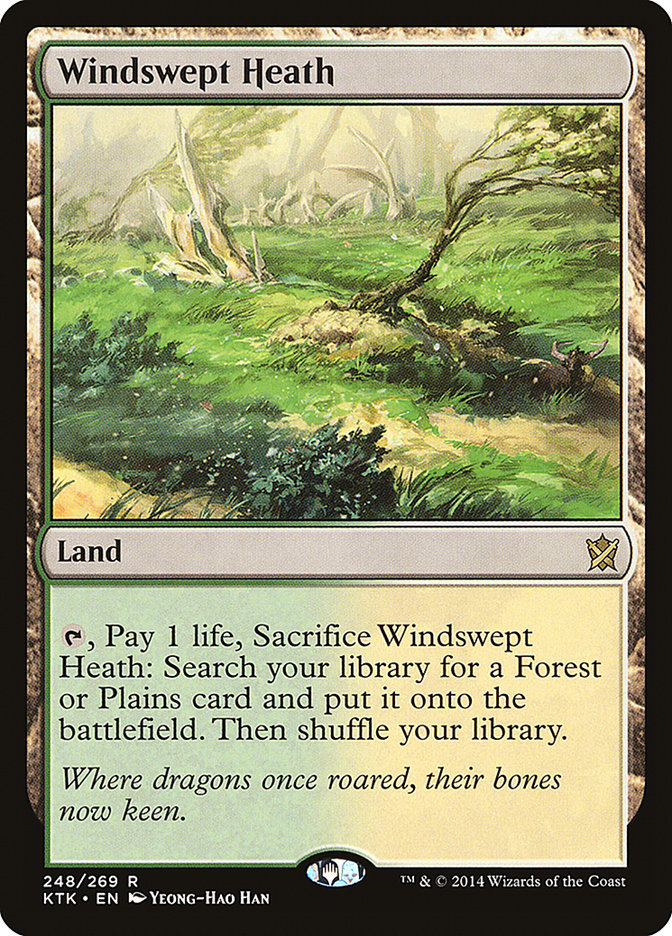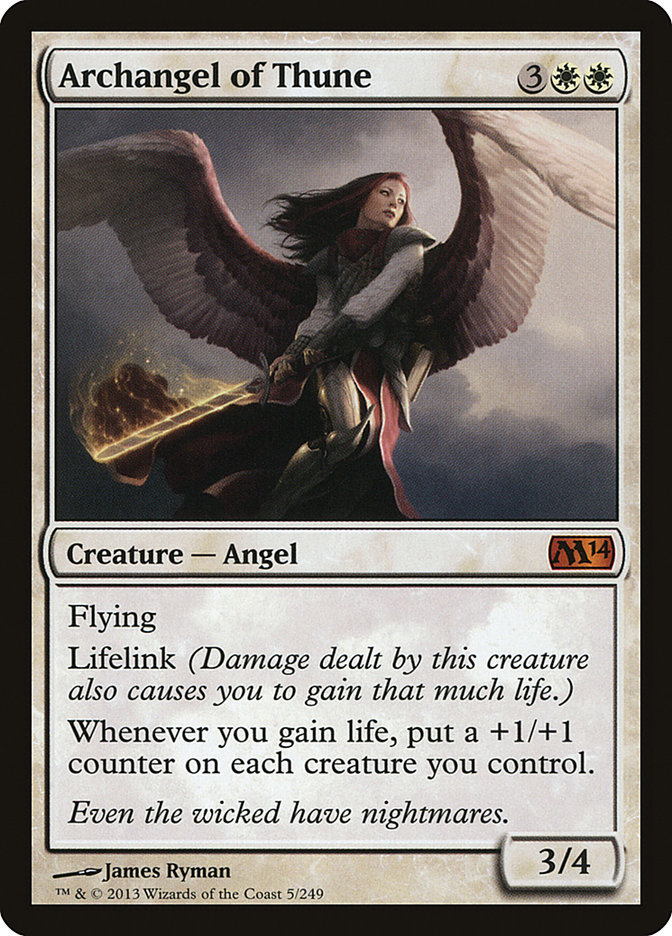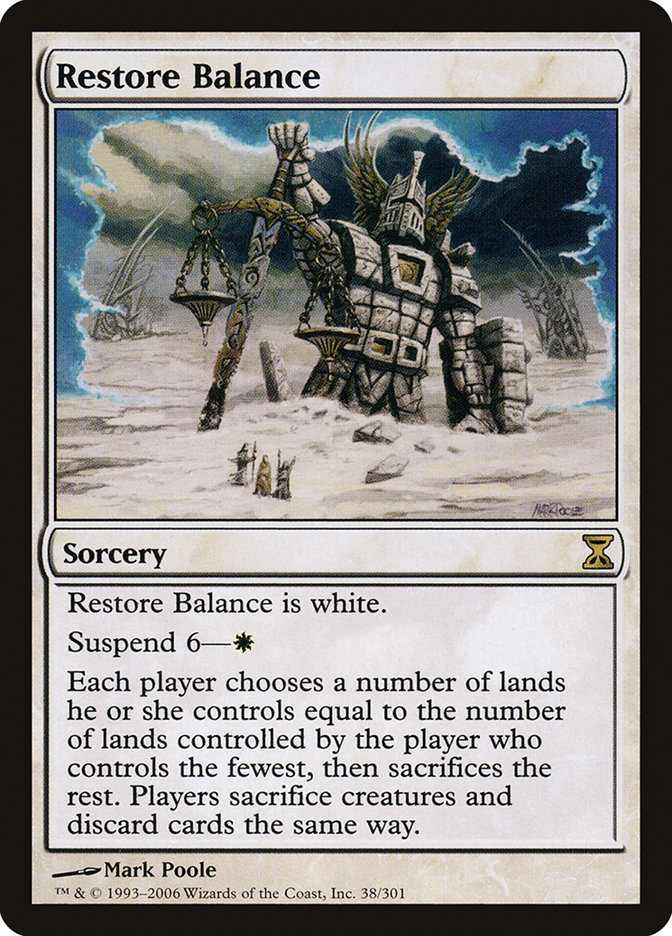I was going to write about Standard post-SCG Richmond this week, but then I realized this had happened:
Creatures (29)
- 3 Birds of Paradise
- 2 Eternal Witness
- 2 Wall of Roots
- 1 Saffi Eriksdotter
- 3 Kitchen Finks
- 4 Noble Hierarch
- 2 Viscera Seer
- 2 Melira, Sylvok Outcast
- 1 Scavenging Ooze
- 3 Voice of Resurgence
- 2 Anafenza, Kin-Tree Spirit
- 1 Tireless Tracker
- 3 Renegade Rallier
Lands (23)
Spells (8)

And this as well:
Creatures (29)
- 4 Birds of Paradise
- 2 Eternal Witness
- 3 Wall of Roots
- 4 Kitchen Finks
- 3 Noble Hierarch
- 2 Viscera Seer
- 2 Melira, Sylvok Outcast
- 1 Scavenging Ooze
- 1 Fiend Hunter
- 1 Courser of Kruphix
- 1 Anafenza, the Foremost
- 2 Anafenza, Kin-Tree Spirit
- 3 Tireless Tracker
Lands (23)
Spells (8)

And I had already known about this because it was physically occurring twenty feet away during DC Pro Tour draft prep and because Gold Pro Nathaniel Smith crushed me at Grand Prix Dallas with it:
Creatures (29)
- 4 Birds of Paradise
- 1 Vendilion Clique
- 4 Noble Hierarch
- 4 Knight of the Reliquary
- 2 Qasali Pridemage
- 1 Spellskite
- 3 Scavenging Ooze
- 1 Voice of Resurgence
- 3 Tireless Tracker
- 4 Spell Queller
- 2 Selfless Spirit
Lands (22)
Spells (9)

Toolbox is back!
Driven Out
Let’s start off with where it went.
Abzan Company was one of the very few “winners” of the Eye of Ugin era. It managed to go toe-to-toe with the optimized versions of Eldrazi, and even before that had been putting up insane results. Post-Shadows over Innistrad it was expect to be the deck to beat, but after a week on top, that never materialized. What happened?
The first big change was an uptick in Death’s Shadow Aggro. In my big Modern breakdowns at the end of last year, I stated that toolbox decks like Abzan Company generally were good against creature combo like Infect, but that Death’s Shadow was a major exception. There wasn’t a silver bullet creature you could find that crushed them the way Izzet Staticaster or Melira, Sylvok Outcast crushed Infect. The hate was cards like Engineered Explosives that didn’t mesh with your main plan. The later Kiln Fiend decks posed a similar issue, but were a bit more vulnerable to the Eternal Witness / Path to Exile plan because their deck was less adept at getting out multiple creatures underneath your setup and was less adept at comboing out early.
The second big issue was Dredge. While Anafenza, the Foremost and Scavenging Ooze are cards, neither works on the scale of hate you needed to stop Dredge’s best draws. Yixlid Jailer did, but with Cathartic Reunion, it was very possible to be facing down ten or more power before you could even cast it, let alone Chord of Calling for it. The fast toolbox decks were favored in a straight-up race against Dredge, but Dredge also had built in disruption in Conflagrate and Darkblast that made that plan unreliable. I don’t know if the matchup was actively bad, but it certainly wasn’t a reason to play a toolbox deck.
Aside: The good news was that the Dredge hate cards didn’t fall into the usual hate card trap of “great versus that deck, terrible against fair decks.” Anafenza, the Foremost is still a three-mana 4/4 that shuts off some toolbox mirror matches. Scavenging Ooze is still a threat against Jund and really everything else playing a longer game. While Dredge isn’t dead, the cost of having a couple of incidental answers to it is low.
The biggest issue may have been the splash damage. While Grafdigger’s Cage wasn’t the best card against Dredge, as eventually they would just cast a bunch of Golgari Grave-Trolls through it, it was good enough for some decks. That meant a larger percentage of the metagame randomly had the absolute best card against you, even if your deck wasn’t a significant portion of the metagame.
New Opportunities
Boom. Gone. The two big issues above took major hits with the Aether Revolt banned list update. This doesn’t mean Dredge or Death’s Shadow is entirely gone, but they are significantly weakened. Dredge is now much more inconsistent and much less attractive, which also means those random Grafdigger’s Cages are dropping away. Death’s Shadow has far fewer draws where their namesake card resolves on turn one or turn two, giving you time to implement the recursive removal plan that has proven effective in the past.
And it gets even better from there.
While Fatal Push does allow midrange decks to reconfigure and possibly address certain issues by branching into new colors, none of those changes matter to toolbox decks. These are all things you have fought against before, and toolbox decks have shown time and time again they come out ahead. It never was the Lightning Bolt that was the problem; it was always the Dark Confidant or Olivia Voldaren.
If anything, Fatal Push might make things for certain configurations of toolbox decks better. Other people will play fewer copies of Path to Exile, so your two-for-one death trigger creatures like Kitchen Finks and Voice of Resurgence will get their value. Your opponents will try to fight back with the previously mentioned problem creatures like Dark Confidant that win attrition fights, except you can play your own Fatal Pushes and not have the same issues of falling behind when you have to cast them early like you did with Path to Exile.
The only concern with Fatal Push is that random linear decks now have a much more playable sideboard piece of interaction for your hatebears. You have a lot of tools that trigger on entering the battlefield, like Sin Collector, and can sideboard Thoughtseize or Negate, which implies that in the general sense it’s not a huge concern, but it’s very possible to imagine a combo deck where you are trying to lean on a specific hate creature because they attack on a weird axis and can’t rely on it as a result of them having Fatal Push. I can’t cite a specific deck right now and it also has to be something that didn’t want Lightning Bolt or Path to Exile to change anything, but the potential is still there.
Fatal Push isn’t the only addition from Aether Revolt to the archetype. Jermol’s list from the Classic at #SCGCOL utilizes Renegade Rallier to further solidify the grindy approach toolbox decks have shifted towards. Besides just being a way to push through removal, the big interaction is with Voice of Resurgence and Viscera Seer to make a bonus Elemental token. Minor other interactions are with Horizon Canopy to build a Rogue Refiner, Qasali Pridemage and Selfless Spirit in the sideboard as cards that naturally die and are good to recur, and fetchlands to ensure you hit four mana for Collected Company on time. I’m sure there are a few more good ones out there that this list missed, as it was Week One, after all.
The bonus on top of all of this value is that Renegade Rallier is part of a secondary infinite combo with Saffi Eriksdotter and a sacrifice outlet. While Viscera Seer isn’t an immediate win, it does generate arbitrarily large scry to find Anafenza, Kin-Tree Spirit to generate arbitrarily bolster triggers in the future. Not perfect, but when all of the combo pieces do things outside of the combo, I’m all for it. If it weren’t for the upfront value implications of the card, this combo would not be enough for me to add Renegade Rallier to my deck.
One card seeing a massive uptick in play here is Tireless Tracker, and after a couple of matches with the card, I’m not surprised. Tireless Tracker can and will run away with games, especially at two Clues a turn due to fetchlands. The initial small size is concerning at first, but in practice it doesn’t matter. You have so many creatures that have to die that they won’t always have a Lightning Bolt for it, and much of the time the initial Clue value from following it up with a land is enough against the grindy decks. If the land is a fetchland, you can even wait to use it to get the full three-for-one! I would not be surprised to see more of this card in fair decks, especially as Clues enable Revolt for Fatal Push.
Remaining Concerns
Ramp decks have historically been rough matchups for toolbox decks. The most aggressive lists can get the matchup close to even, but if you start to slow down, the matchup drops off to unwinnable pretty rapidly. I believe the blue versions like Coralhelm Combo gain a fair amount back with Unified Will and Negate, but I haven’t personally tested the matchup.
Despite the general opinion that Ramp is going to be a thing to do after Fatal Push boosts midrange, I’m not convinced. If the fair decks actually need to beat Ramp every tournament, they can do so, or at least they can get it close enough that a good fair matchup is no longer a draw to the Ramp decks. This feels a lot like a situation where for the first week people think this is true, and maybe event results reflect it, but then everyone shows up with Fulminator Mages and Surgical Extractions and life starts sucking for anyone trying to play big spells.
Collective Brutality was another huge hit to toolbox decks. Your best cards are the green creature-generating instants and your deck is fundamentally supported by your mana creatures. A Collective Brutality taking out one of each is devastating, even if it is card neutral. Having played the Coralhelm Combo deck, I saw Tireless Tracker is a big help on this front, allowing you to make pure negative card economy less effective. Simply put, Collective Brutality moves the game towards the kind of state where G/B has one or two cards and you have zero, but Tireless Tracker pushes it back towards everyone having a couple more cards they are fiddling with, which in turn allows you to make blocks on large creatures and do all sorts of other positioning things like grinding Gavony Township counters.
Chord of Calling is also a pretty big liability against Collective Brutality. Not only can they pick off a Chord with it, but killing the mana creature often strands Chord of Calling in your hand for an unacceptable amount of time.
There is a solution here, and it is to just play a Coralhelm Combo-esque deck that can play reasonable midrange games if your setup gets disrupted. I think Brian DeMars’s list shows traditional Abzan Company can move in this direction, so the actual answer might just be to play a ton of Tireless Tracker and don’t change anything else.
The final concern is that there are still combo decks out there that toolbox doesn’t have great ways to interact with. You can go after the actual Puresteel Paladin or Sram, Senior Edificer with removal in ways you can’t hit a Griselbrand, but I would not default to saying toolbox decks are good against the Puresteel Paladin deck. This may be a time where Thoughtseize in larger numbers is a good sideboard decision, especially if your maindeck has cheap interaction slots to switch out. Chalice of the Void is another card that is really good against the Puresteel Paladin deck that has been fine in past toolbox decks, so consider that if things start getting out of hand.
Lists
Aside from creatures, it looks like the core decision on what subarchetype of toolbox you are is selecting your spells. You can play Collected Company, Chord of Calling, or cheap interaction, but all of the above just doesn’t work as there aren’t enough slots in the deck for Collected Company and a bunch of non-creatures. There’s a weird sliding scale at work here: Collected Company is the best card against fair decks, Chord of Calling is the best against linear ones, and Path to Exile falls somewhere in the middle.
The overlap on Collected Company and Path to Exile is the Coralhelm Combo deck. You don’t have direct tutors to assemble combos or specific hate cards, but you sure are good at putting powerful cards onto the battlefield. The big hole is finding coverage against unfair nonsense without being able to select precise cards, which is why Spell Queller is such a big deal.
The alternate shell I would be interested in is Abzan Company built “fairly” with Tidehollow Sculler and Wasteland Strangler. Scavenging Ooze is another good Processor enabler and Selfless Spirit exists to protect your Tidehollow Scullers if you can’t process them, at which point the deck basically builds itself.
Creatures (29)
- 3 Birds of Paradise
- 3 Eternal Witness
- 4 Tidehollow Sculler
- 4 Noble Hierarch
- 3 Scavenging Ooze
- 3 Voice of Resurgence
- 3 Wasteland Strangler
- 4 Tireless Tracker
- 2 Selfless Spirit
Lands (22)
Spells (9)
Sideboard

Notes:
- Path to Exile over Fatal Push due to wanting to exile things for Processors.
- This is about as hard value as these decks can go. I’m almost completely abandoning the Tron and Valakut, the Molten Pinnacle-based matchups, with the Fulminator Mages in the sideboard mainly being a generic fine card to recur or Collected Company into elsewhere too that gives you some small percentage there.
- I originally had Renegade Ralliers and was excited to Wasteland Strangler my own Voice of Resurgence to Rallier it back. I then realized just looping spells with Eternal Witness is better.
- I typically hated Razorverge Thicket in Melira Company, but that was because you needed all of your mana for Chord of Calling. Here, taking less damage over a long game is more important and you are capped on curve at Collected Company.
- There are a ton of Gavony Township copies because all your creatures are pretty bad on their own. The card seems very important in breaking green creature parity.
- I considered Knight of the Reliquary, but wanted to distance myself from the Bant deck to try some new things. It may belong in here anyway.
The output of choosing Collected Company and Chord of Calling is the obvious Abzan Company. Most of this article uses that deck as a key example, so I don’t have much more to say beyond “start from one of the two builds I referenced earlier.” The only card not being tried there is Fauna Shaman, which might do some cool things by dropping stuff for Renegade Rallier to pick up.
Creatures (26)
- 1 Spike Feeder
- 3 Eternal Witness
- 3 Wall of Roots
- 1 Orzhov Pontiff
- 4 Noble Hierarch
- 1 Qasali Pridemage
- 1 Linvala, Keeper of Silence
- 1 Spellskite
- 3 Scavenging Ooze
- 1 Restoration Angel
- 1 Thragtusk
- 3 Voice of Resurgence
- 1 Archangel of Thune
- 1 Siege Rhino
- 1 Selfless Spirit
Lands (23)
Spells (11)

I’ve been a bit down on this deck in the past, but I think it might have some recent improvements that make it more interesting. Jeff Hoogland is the source of one: Collective Brutality. The big issue with the pure Chord versions in the past has been that they are slow to get off the ground and Collective Brutality solves that by stymieing all of the low-to-the-ground decks and giving you more all-purpose combo interaction.
The other big thing is that this is one of the few lists that can fully utilize the simple “return a fetchland, ramp” mode of Renegade Rallier.
Rather than try to figure out a bunch of singleton bullets, I just want to display something awesome derived from a Jeff Hoogland Twitter post.
Has science gone too far? #modern #mtg pic.twitter.com/jYscIJSrp4
— Jeff Hoogland (@JeffHoogland) January 29, 2017
Creatures (20)
- 4 Sakura-Tribe Elder
- 1 Kiki-Jiki, Mirror Breaker
- 1 Glen Elendra Archmage
- 3 Wall of Omens
- 4 Restoration Angel
- 3 Voice of Resurgence
- 4 Renegade Rallier
Lands (26)
Spells (14)

Notes:
- Eldritch Evolutioning Voice of Resurgence into Renegade Rallier is “the joke.”
- Not wanting to end-step your Sakura-Tribe Elder sacrifice is another iteration of “the joke.”
- I wonder if there should be some stupid Primeval Titan-style card to get at the top of the Eldritch Evolution curve.
- Tireless Tracker probably also belongs in this list, or really a list in every format forever at this rate.
Overall, I’m just excited by all the prospects here. Not only is my favorite Modern macro-archetype good again, it is good in new and unique ways. If you have any past experience with toolbox decks, I would definitely give one of these options a look for #SCGRegionals next week or #SCGBALT, #SCGINDY, or #GPVAN later this month.
Otherwise, could I try to peddle some of my other wares?



